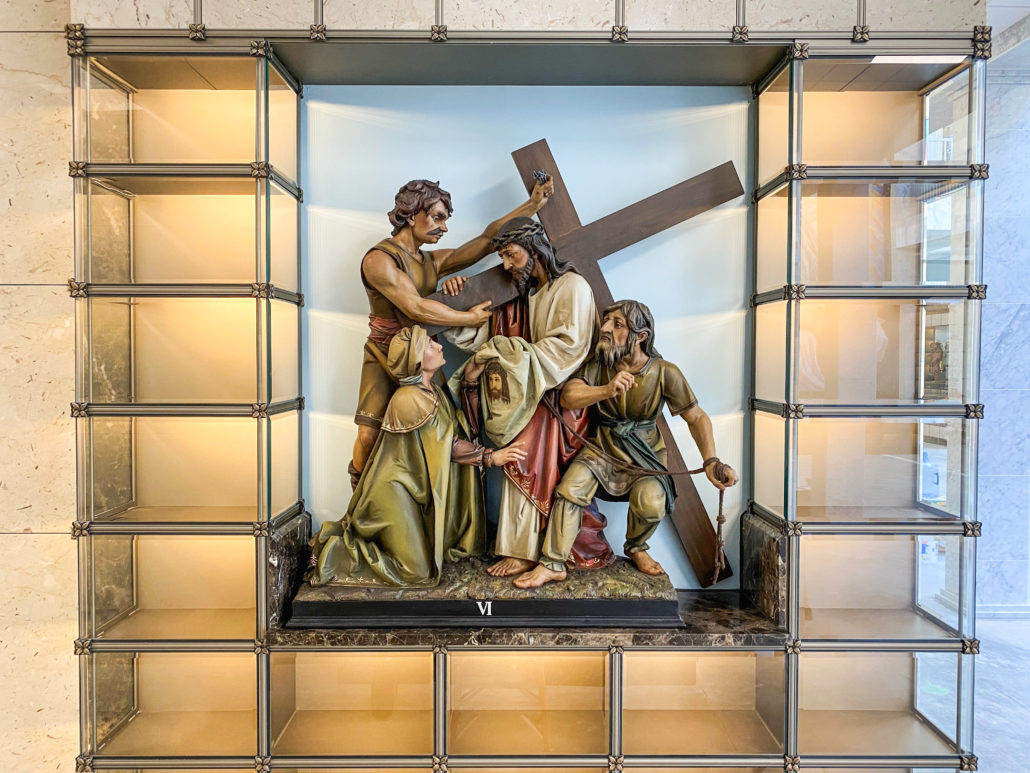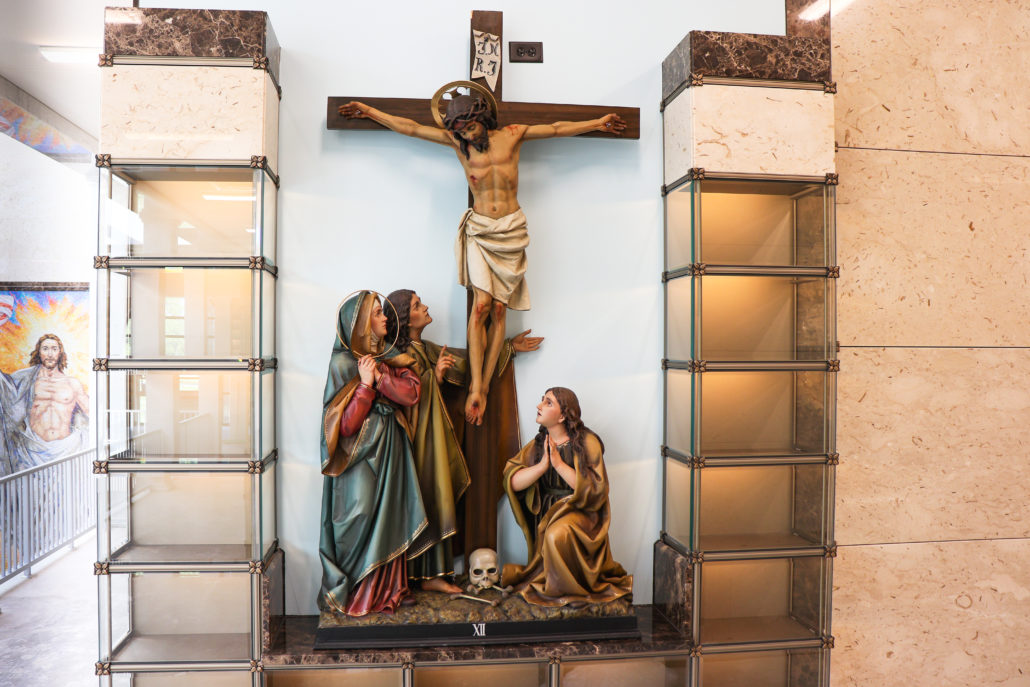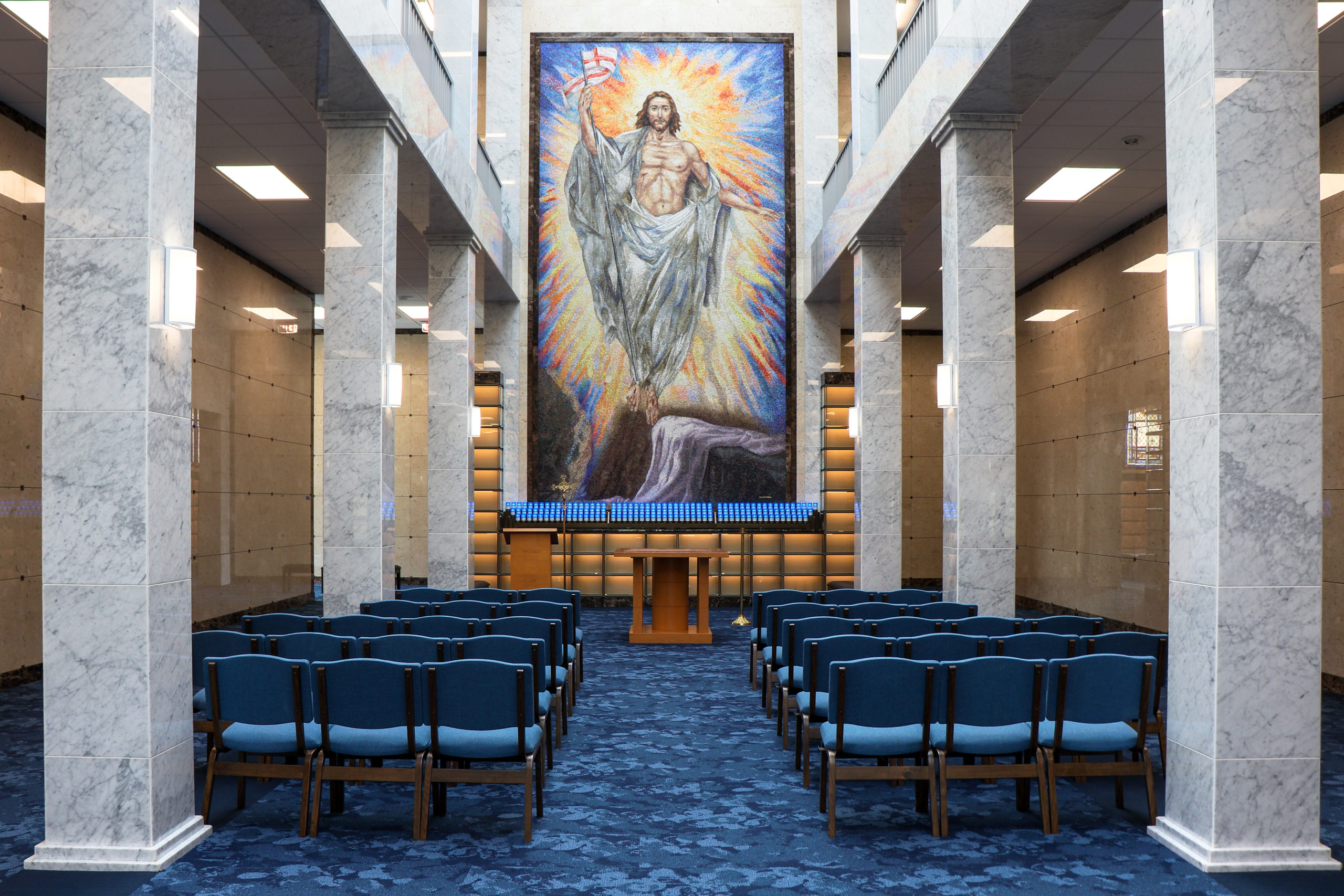
Gate of Heaven Cemetery Open House provides a preview of new and restored sacred artwork
When families enter Phase 3 inside the Chapel Mausoleum of the Resurrection at Gate of Heaven Cemetery and Mausoleum, they will notice a magnificent new addition to the existing structure.
The new Chapel Mausoleum of the Resurrection, with elegant marble crypts, glass and marble cremation niches, and a new chapel section dedicated exclusively to cremations, will also feature several magnificent works of art, including a two-story mosaic of Jesus Christ bursting out of the tomb in brilliant, bright colors.
Resurrection Mosaic
Inspired by the magnificent stained glass window of the Resurrection in the Co-Cathedral of the Sacred Heart in Houston, TX, this two-story image of Jesus Christ bursting from his tomb in a brilliant array of colors has been reimagined and recreated in a new medium. Utilizing the same concept sketch from the stained glass window, Mellini Art Glass & Mosaics, an art studio based in Florence, Italy, designed, built and installed the mosaic, as it has for many cemeteries, churches, and basilicas worldwide for 70 years.
To create the mosaic, a team comprised of 10 artisans worked for over a year, choosing tiles from over 1,800 tones of color and utilizing a technique of mosaic creation from the time of the great Italian Renaissance artist Michelangelo. The 12-foot wide, 24-foot high mosaic commands the space as an ever present reminder of Jesus’ victory over death.
Peacemaker-Stained Glass Windows
The second-most important work of art is a stained-glass window titled “The Peacemakers,” inspired by the Sermon on the Mount, also known as the Beatitudes. In the scriptural readings of Mathew 5:9, Jesus says, “Blessed are the peacemakers, for they will be called sons of God.”
The Peacemaker-stained glass window will be installed on the second floor in the new cremation chapel on the opposite side of the mosaic. The window, which was saved from the former Sacred Heart Church in Vailsburg, a neighborhood in the northern section of Newark, NJ, displays Christ with the 12 apostles.
The Peacemaker chapel will also feature statues created by Demetz Art Studio of St. Francis of Assisi and St. Claire of Assisi, two saints well-known for being peacemakers. In 1244, when the army of Emperor Frederick II, at war with the pope, sent his army to attack the town of Assisi, St. Clare, who was ill, asked the priest to bring her the Hosts of Jesus Christ. According to a testament attributed to the saint, as the soldiers were about to enter the monastery, she held up the ciborium, prayed for protection, and the soldiers fell backward, dazed, and fled.
According to a legend involving St. Francis of Assisi, a wolf was terrorizing Gubbio, a town north of Assisi. With no weapons or shields, St. Francis confronted the wolf while praying and asked it not to attack the people or animals of Gubbio. In exchange, St. Francis promised the wolf that the people of the town would provide food. The townspeople agreed, and there was peace.
The life-size wooden statue of St. Francis will feature him holding a dove, a symbol of peace and the Holy Spirit. The statue of St. Clare will feature her holding a ciborium.
Restoring sacred works of art from former churches through patrimony and relocating them to archdiocesan mausoleums provides local Catholics the opportunity to appreciate works of art they made connections with from their baptism to their resting space at Gate of Heaven Cemetery.
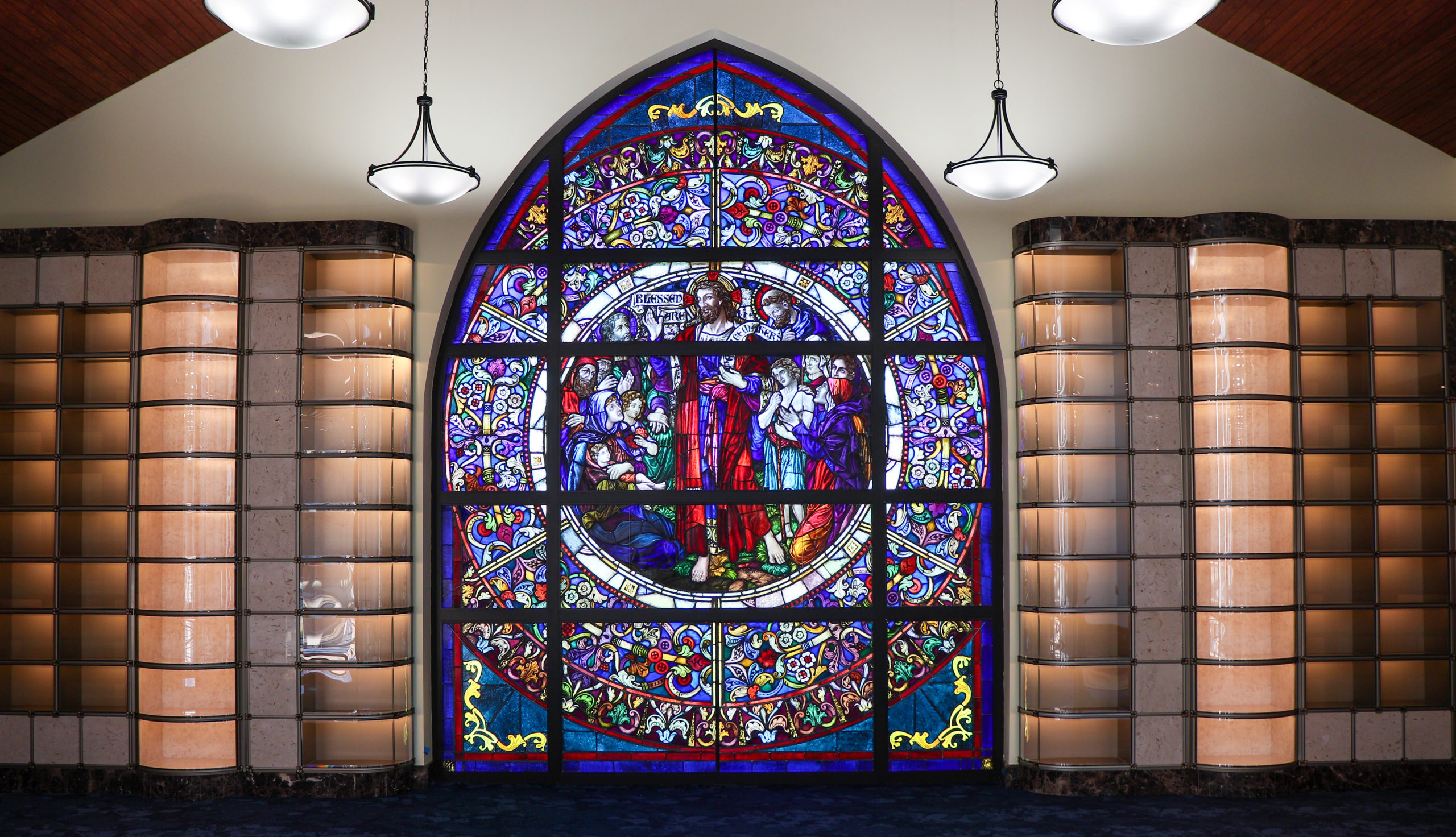
Stations of the Cross
Another artwork includes 14 life-like statues of the stations of the cross handcrafted from wood made in Tyrol, Austria, almost 200 years ago. The sculptures were saved from St. Peter’s Church (formerly Queen of Angels), which was built in Newark, NJ, around 1860, and were restored to their original glory.
Val Gardena, an Italian/Austrian area, located in the heart of the Dolomites, where the statues originated, is world-renowned for its superior quality of statues, religious figures, and church altars.
Patrimony from Queen of Angels (Formerly St. Peter’s Parish, Newark, NJ)
The history of this church dates back to 1861, when the German immigrant population in Newark needed a new house of worship. Architect Otto Guenther was chosen to design the new church, then called St. Peter’s, in gothic fashion.
As the city scape of Newark changed, the German immigrants would continue to use the church for their services for over a century. One day in 1958, after hearing of a fire at the original “Queen of Angels” church on Academy street, the German congregation invited the group to worship at their building on what was then called Belmont Avenue.
The Queen of Angels parish was the first black Roman Catholic congregation in the city, after being officially recognized in 1930. The congregation grew at a steady pace, and eventually became an integral part of the city’s history. In the 1960’s, the Queen of Angels group was holding twice as many masses as the German group who built and also still occupied the building. By 1962, the German congregation moved to a parish in Irvington, leaving the towering house of worship solely to the Queen of Angels group.
As racial tensions were rising across the country, the Queen of Angels parish became a staple of the civil rights movement. Dr. Martin Luther King Jr. visited the church a few times, and even used it as a meeting place for his Poor People’s campaign.
In 1967, a rebellion broke out in Newark, leaving parts of the city charred, shuttered husks of what they once were. Surrounded by low income housing and blighted structures, the church still served as a landmark and a place for the black residents of the city to congregate and pray.
The Archdiocese decided to close the church in 2012 leaving these now 160 year old hand carved stations of the cross without a home. Catholic Cemeteries accepted the opportunity to rescue these 14 works of art created in the Tyrol province of Austria, known for its fine wood carving. The statues have been fully restored to their original luster and have been incorporated into 14 cremation niche banks in the new Chapel Mausoleum of the Resurrection at Gate of Heaven Cemetery.
Stained Glass Patrimony from Sacred Heart Church, Vailsburg, Newark, NJ
When opened in 1929, Sacred Heart, located in the Vailsburg section of Newark, was the largest parish church in the United States, seating 2,480 parishioners.
The church was closed in 2010, but the over 90 year old stained glass windows were removed as part of the Archdiocese of Newark’s
patrimony program.
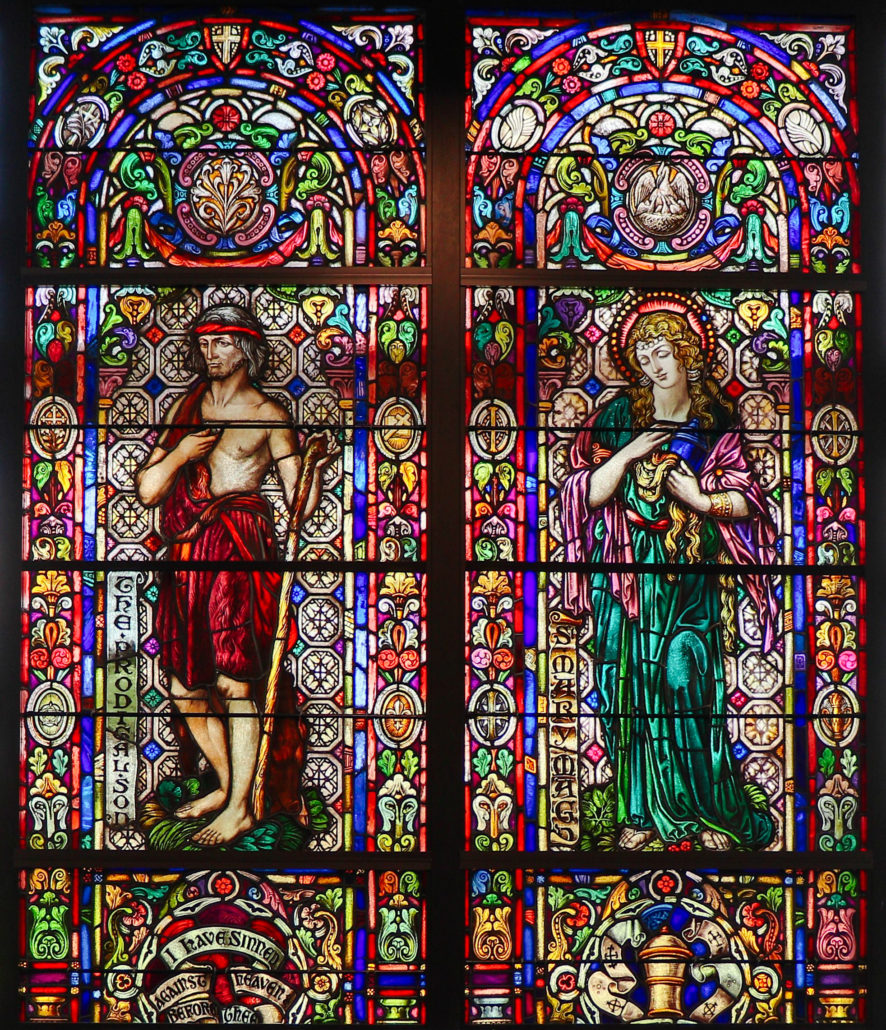
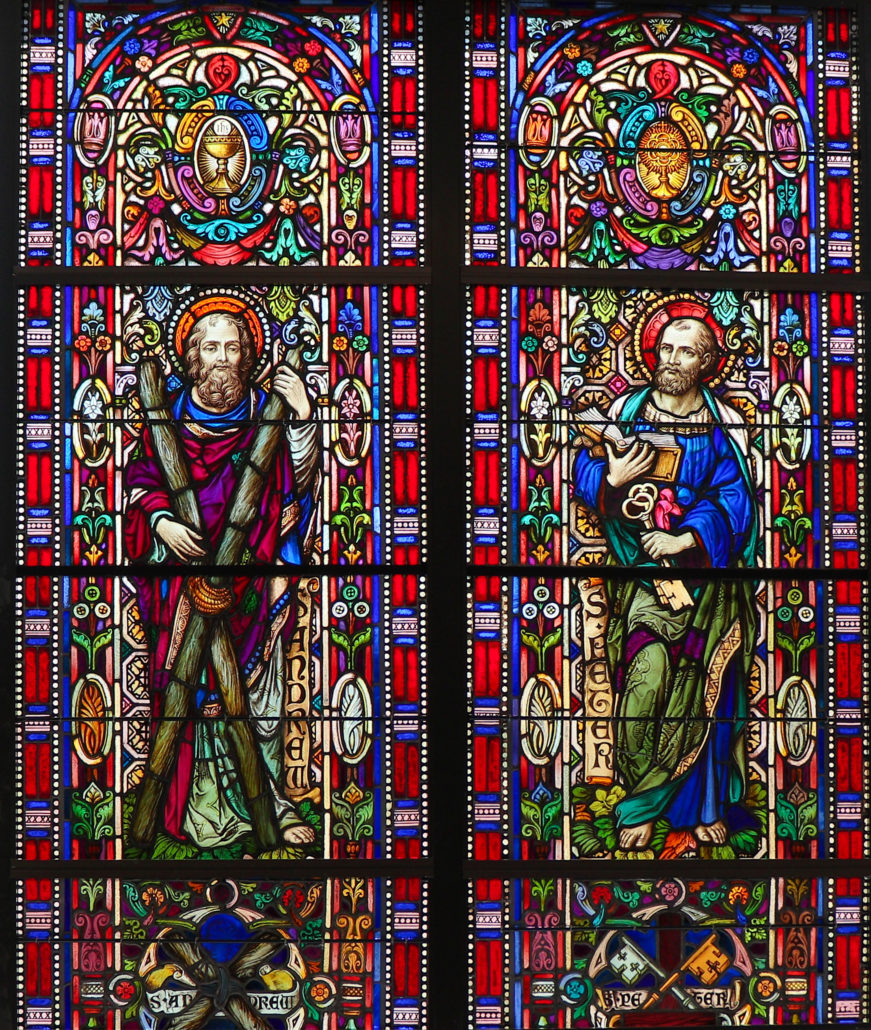
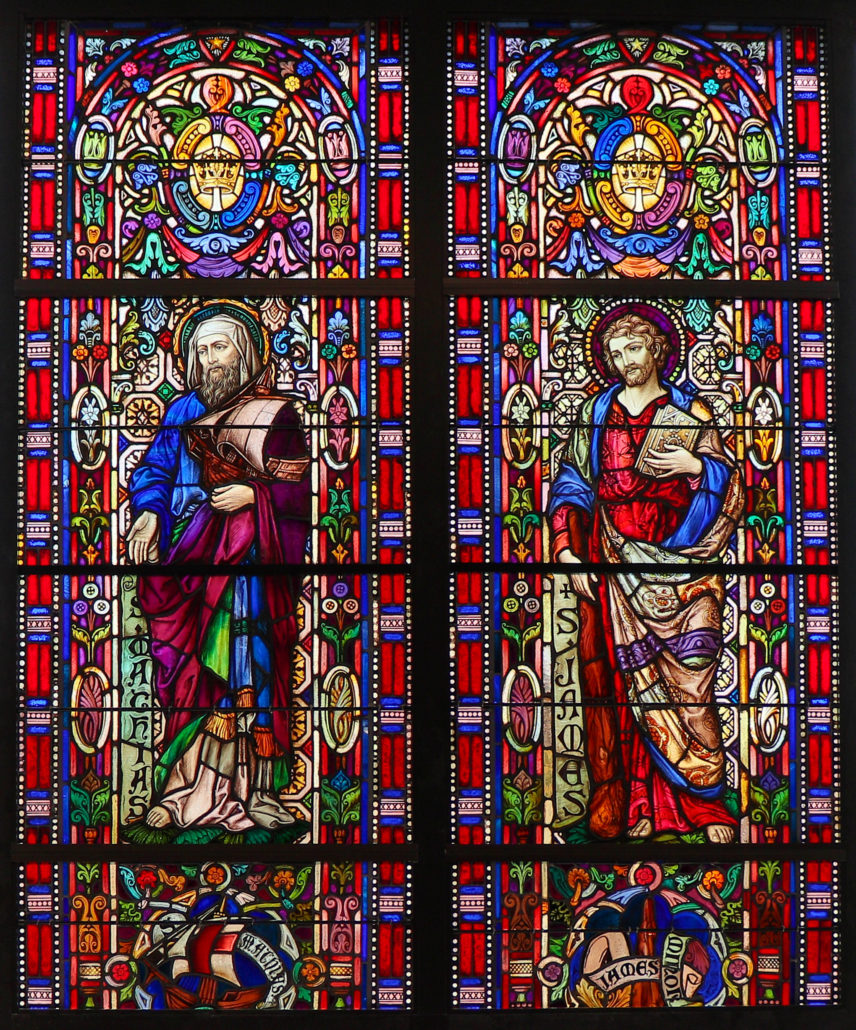
All of the glass is hand blown, hand painted with vitreous pigments and fired in kilns at 500 degrees. According to parish accounts, the stained glass windows were designed by and/or fabricated by local artists Charles Hodge and John Farrell in the European style.
Many of the windows removed from the church have been installed in the mausoleums of the Archdiocese in 3 separate cemeteries. The last of the 36 stained glass windows removed from Sacred Heart will be installed in the Chapel Mausoleum of the Resurrection at Gate of Heaven Cemetery.
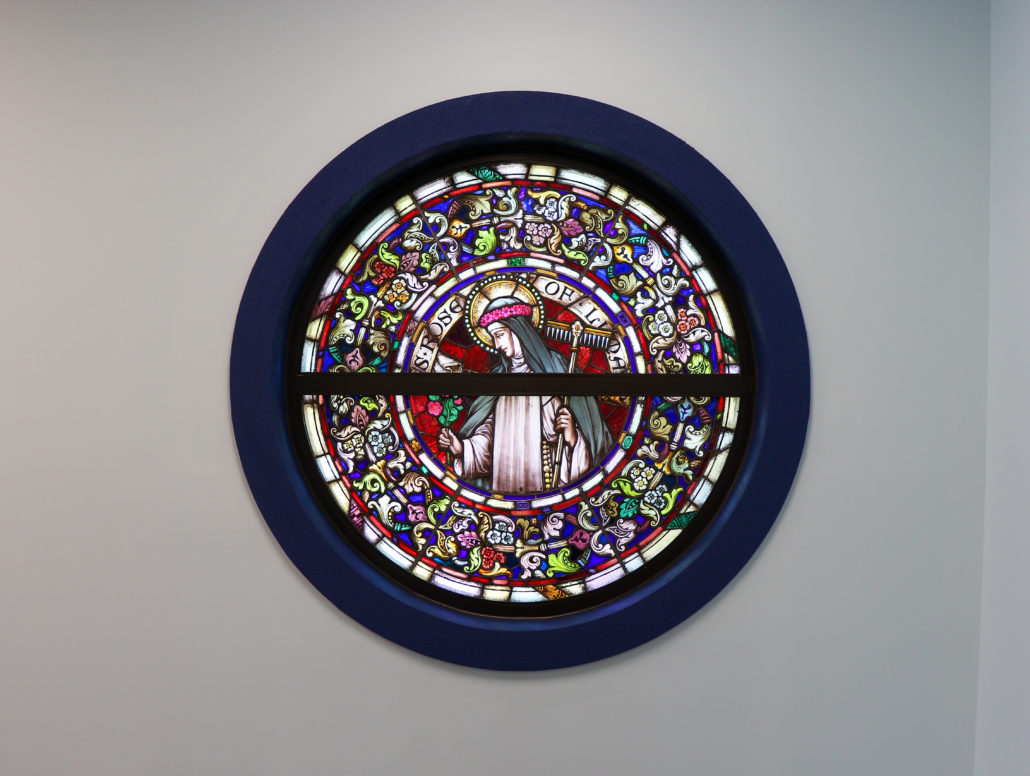
The Phase 3 section of the Chapel Mausoleum of the Resurrection will open in the fall of 2022. To learn more about the many options available from mausoleum crypts, glass cremation niches, and other options, contact your Memorial Planning Advisor. If you do not have one, send an email and request to tour the new section when it opens to: cemetery@rcan.org. Protect your family legacy at Gate of Heaven Cemetery. Take advantage of special financing and memorialization options while they last.


